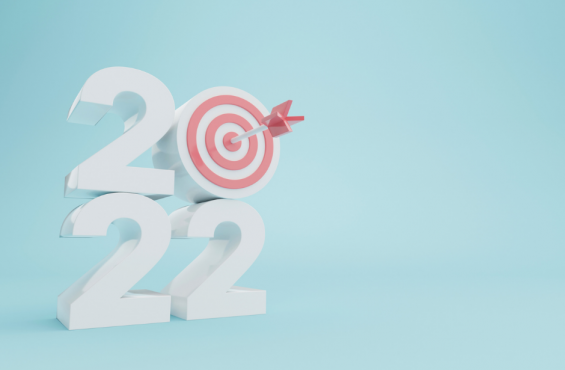Looking to get back on track with your investments? Start by getting organized with a three-bucket approach that investment advisors and financial planners use to assign goals and investment objectives to specific allocations of a client’s portfolio.
This approach can help you clarify your financial goals and your plans to reach your goals, and it can simplify your decision-making in 2022 and beyond.
Here’s how it works:
Bucket #1: Short-term spending and emergency reserves
This bucket is typically the smallest. Depending on your situation and comfort, we recommend keeping six months to two years’ worth of core living expenses in cash. This way, you’ll have money to cover any immediate costs, and in the event of a stock market decline, you won’t be forced to sell stocks at low levels to pay your bills.
Since this is money you’ll use sooner than later, you’ll likely want to keep it in more stable investments. Online high-yield savings accounts can be useful as these may pay higher yields much more than traditional banks or money market funds. Or some of your reserves could be invested in fixed income, which has the potential to generate higher returns. You’ll find more ideas on what to do with cash here.
Bucket #2: Medium-term spending goals
For goals that are two to four years away or for a big purchase that you’re saving up for in the near future, you may need to take a little more risk in an effort to generate a better return over time. Bond or alternative funds can be a good fit. These funds can lose value at times, but they have greater growth potential than CDs, savings accounts, or money-market funds.
Bonds have been far less risky than stocks over the long haul, but not all bonds are low risk. There are also higher and lower risk alternative funds, so you’ll want to choose carefully. Talk with your advisor about which funds might be right for your risk tolerance and time horizon. FundX fixed income and alternative strategies aim to help mitigate volatility.
A conservative blend of fixed income and equities can also be used for investors who want to reach for higher potential returns for this bucket. In some client accounts, we may use balanced and alternative mutual funds for mid-range goals.
Bucket #3: Long-term goals, such as retirement
Investors earmark this portion of their portfolio for retirement, healthcare, their kids’ college education, and spending in the later part of life. This bucket tends to be the largest over time and invested in the highest risk/return profile since it has the most time to grow.
Depending on your stage of life, this bucket could be invested in all or mostly equities for longer-term growth. Remember when stocks fall, you should have enough in your other buckets to get by, and since this bucket is for longer-term investments, you also should have time to recover from losses.
FundX’s financial planning program can help clients determine how much to save, build, and strategically invest for these kinds of longer-term goals. Our advisors work with clients to determine their overall asset allocation based on their plan, including their comprehensive assets, liquid portfolio, goals, savings rate, and retirement goals. We also consider which accounts are taxable versus tax deferred. Set up a time to talk with an advisor here.
Tips for setting up a bucket strategy
You’ll want to make sure you have a plan to replenish your buckets over time. Rebalancing, for instance, is one way to refill your buckets: After a strong run up in the equity market, your stock allocation may have grown too large, and you could rebalance, selling some of your stocks at higher levels, and adding the proceeds to your other buckets. Rebalancing can bring your portfolio risk back on target while providing additional cash to fund other financial goals.
The bucket approach can be particularly useful for retirees who are 72 or older and required to take required minimum distributions (RMDs) from their IRA (their long-term bucket). Retirees who don’t need their RMD for income can use it to restock their buckets: any excess RMD (from the long-term bucket) can be used to replenish the other two buckets—mid-term spending or cash reserves.
Once you’ve organized your investments into these buckets, you may find it easier to move forward on your other financial goals. For instance, if you have money that you need to get invested, consider which bucket this money belongs in, and then target investments that are appropriate for that time frame.
